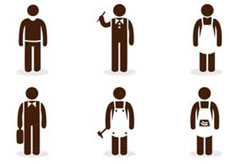
In population studies, we typically learn how gambling and problem gambling are distributed across socio-demographic variables, e.g. gender, age, educational level and income. But what are the real-life contexts of gambling and non-gambling that shape this distribution? In this study we investigated gambling in the context of working life. This analytical perspective contributes to the understanding of the social, cultural, and situational correlates of gambling and problem gambling.
The article is freely available here: https://journals.sagepub.com/doi/10.1177/1455072519899779
Citation: Binde, Per & Romild, Ulla. (2020). Risk of problem gambling among occupational groups: A population and registry study. Nordic studies on alcohol and drugs, 37(3): 262-278. doi:10.1177/1455072519899779
Abstract: AIMS – To identify which occupational groups have elevated levels of regular gambling participation and at-risk and problem gambling, and to explore job-specific factors associated with elevated levels. METHODS – Statistical analyses were performed on data from the 2015 Swedish population study on gambling and health. The principal registry variable was occupation, classified according to the Swedish version of the International Standard Classification of Occupations (ISCO-08). Two gambling variables were studied: regular gambling participation and at-risk and problem gambling, as measured by the Problem Gambling Severity Index (PGSI). For statistical regression analyses, socio-demographic data were used such as gender, income, and country of origin. RESULTS – We found significant differences between occupational groups with regard to the two gambling variables. In general, manual jobs with predominantly male workers scored high, especially when there was no fixed workplace. Several significant differences remained when we controlled for gender. We also found support for three types of workers having elevated levels on the gambling variables: (1) Building, construction and service, mobile, (2) Vehicle drivers, and (3) Monotonous manual indoor work. These results were confirmed by comparisons with propensity score matched controls. CONCLUSION – A policy implication of this study is that some occupational groups should be prioritized in the prevention of problem gambling. Theoretically, the study shows that occupational categories represent real-life cultures and contexts of gambling and non-gambling as distinct from the abstract socio-demographic factors that are usually considered in relation to gambling participation and problem gambling.
> Read a popular science summary of the article (in Swedish)
> Read a GREO research snapshot of the article

